Margareth
Thatcher, a special guest in Santa María del Mar
(
click here to see the full information)
A few days before Christmas, Scotland Yard asked us to
speak with the priest of Santa Maria del Mar about the attendance
of Mrs. Margareth Thatcher to the temple, 24th of December,
1994. We were told that the people who organized the visit
to Barcelona asked for the temple in which the Midnight
Mass was preetier and they were told that this one was Santa
Maria del Mar. Then they prepared the visit for Mrs. Thatcher,
her husband and their entourage. I was asked which site
would be assigned because they wanted to prepare their security.
They suggested that the best place would be the presbytery
and the proposal was acceded. Then the presbytery was the
place where the Chapel of Music, the Escolania and the Escola
Cantorum acted, and so it was not difficult to accede to
the proposal. The priest informed Scotland Yard that he
would appoint a lady who could inform and translate the
celebration to Mrs. Thatcher, and this lady was Ms. Urchi
Bequer.
Ms. Thatcher enjoyed the translation at the time of the
homily and the whole mass. After the picture in which the
rector of Santa Maria del Mar, Francesc Tort Mitjans, preaches
the homily we translate it.
The number of people attending Mass, as it has been since
1986, was arround two thousand.
The news of Mrs. Thatcher's planned visit was not known
in advance either at the city level or at the parish level,
as it was agreed with the police. It must be said that,
as seen in the last picture with Jesus Child, many glances,
especially at the end of the Mass, were addressed to the
former Prime Minister of England, who was at especially
attentive and affectionate and spoke kind words to all the
people who went to greet her.
Mrs. Thatcher finally signed with her husband in the book
of illustrious visitors.
Other historical documents
of Santa Maria del Mar
A great fire burnt Santa Maria del Mar back in 1936. At
the same time, a bonfire was done in order to destroy the
books of the temple: the books of baptisms, marriages, deaths,
different files from the church... The huge amount of books
that were thrown to the fire was the reason why some of
them were not totally burnt. Some of them remained with
a few marks and the people could save them. Time passed
by and those saved books ended up in antiquarian and book
shops. I discovered them in those places and bought those
relics. This
post on the blog shows some of them.
Opening Party Proclamation
- Festa Major del Barri de la Ribera, 2008
What a joy I found among those who live here since I was
appointed rector of Santa María del Mar! Among you,
I have spent the best moments of my life and also the saddest
ones, such as the death of my mother and my sister María
Antonia, who attended this dinner happily last year, 2007.
My stay with you wanted to be at the service of everyone,
and I enjoy when we meet often in the streets of our neighborhood.
Thank you also to the three thousand of you who signed up
asking me to continue as the rector of Santa María
del Mar. Thanks, especially today, to the people who organize
the Celebration of the neighborhood, that offered me to
take part in this 2008 and to pronounce the opening.
How good you live when you find that support! I have to
remember the good relationship maintained with the councilors
of Ciutat Vella: Mr. Cernuda, Dr. Clos, Dr. Casas, Mr. Duarte
Fusté, Ms. Cati Carreras, Mr. Carles Martí
and the current councilor, Mrs. Etziar Gonzalez. Also with
the mayor of Barcelona: Mr. Pascual Maragall, with Dr. Joan
Clos and the clairvoyant and dialogant Mr. Jordi Hereu,
who is represented by Mr. Carles Martí, the First
Lieutenant of the Mayor, whose depth of thought is valued.
We note the good tune and permanent collaboration with the
Platform of Entities of the Bank chaired by Mr. Emili Cota,
a man from the neighborhood who has won name and prestige
for his long history and dedication. I also remember the
constant good treatment with the members of the Party Commission,
which was presided by himself, is made up of such outstanding
names as Mr. Francesc Mingo.
The relationship with all these political and social characters
was not a simple protocol. Many of them were part of the
Patronage of Santa María del Mar that led to the
restoration of the temple, Dr. Clos, among others. Some
of them were also active members of the Pastoral Council
of Santa María del Mar, such as Mr. Cota and the
president of the Association of Neighbors...
In this context all things were done both religiously and
socially. For example, the games room for young people,
boys and girls, with billiards, table football, table tennis,
library, television ... The School of Music and Escolanía
de Santa María del Mar formed by girls and boys of
the neighborhood with different teachers of piano, violin...
The director of the Bank still reminds me how many of the
savings books opened by the parish for schoolchildren still
remain. The same Mr. Cota along with Mr. Josep Caparros
presented to the Escolanía 10 violins.
The Escolania of Santa Maria del Mar was the joy of the
parish and the neighborhood. His level was so high that
they were even hired several times to sing at the Sant Jordi
Mass in the Generalitat, offering a well applauded concert.
They also performed many times at weddings. The Escolania
with its School of Music was a social work of first order
and a very valuable element for the parochial celebrations.
It was them, with the Music Chapel, the protagonists of
the songs. No one else could fit in the chancel.
In the musical side I can not forget the already mentioned
prestigious Chapel of Music of Santa Maria del Mar formed
and directed by Mr. Enric Gispert, Master of Chapel with
appointment of the same Cardinal Archbishop of Barcelona
Dr. Narcís Jubany, who loved so much Santa Maria
del Mar, even when retired. All these facts show that religious
celebrations before the tourist boom had the temple full
of people. Not just Christmas, with the singing of the Sibyl.
Also on August 15, the patron saint of the Basilica, with
the Little Altarpiece. There was no obstacle in the carpet,
which was only put on weddings and was later removed. Santa
María del Mar is more welcoming when there are the
less obstacles to enjoy the clean stone, also with banks
reduced to the minimum necessary for ordinary celebrations.
We quoted before the Patronage. Thanks to its efforts with
Banco Hispano America and the Generalitat, a comprehensive
agreement for the complete restoration of the whole temple,
the five planks, facades and stained glass windows is signed.
In this field, we can not fail to remember the stained glass
window of the Barcelona 92 Olympic Games, the work of the
renowned artist Mr. Josep Fernández Castrillo, made
by the Foundation Center of the Glass of Barcelona, directed
by Ms. Pilar Muñoz. A fact of this size and cost
needed more than the simple idea. Thanks to Mr. Emili Cota,
the City Council and others it could be carried out. Said
stained glass is the most photographed and admired by the
tourists who visit the temple.
The final plan conceived for the Barrio was that the chapel
where the stained glass was placed should be dedicated to
Barcelona. It was planned to place in it a replica of the
tomb of Santa Eulalia, whose original one is in the Archaeological
Museum of Monjuic. The image of Santa Eulalia, work of the
sculptor Mares, and an explanatory panel of the stained
glass with the name of the author, the explanations of his
own work, the names it contains...
This were planned to unite the neighborhood and parish,
both the promoters of this important event, as well as all
the religious and civil entities of the District and the
City. This was not a bold idea, I promoted it myself and
formed the brotherhoods of Bacalao, and of the Virgin of
the Olive.
Without communion with neighbors, a parish is not viable
as a religious or social center. Every rector arrives at
a place that existed before him and will continue after
him. It has to be put at the service of both past history
and present reality, shunning personal protagonism. A single
stone does not make Santa Maria del Mar but the sum of thousands
...
The history of Santa Maria del Mar, written by me and funded
by the Uriach Foundation reminds it to us.
Many people from the neighborhood wanted to be in the various
activities of the parish, informing and collaborating. It
is thanks to this implication that we learned from the will
of Sta. Rosita Nonell, who left her flat of 200 square meters,
plus the lows of 200 square meters, located in Canvis Nous
street 1, making corner with the Santa Maria square, for
the Residence of the Elderly in the Neighborhood. When he
died we were not told of this, until several ladies came
to me, including Mrs. Maria Victoria Franco, informing me.
I asked them to put this in writing. The letters were presented
to the heirs, finally the public deed of donation of the
floor and a warehouse of Canvis Vells street.
There are many other important facts in the same context.
The magnificent organ, coming from Vic, which in agreement
signed by me and Mr. Enric Gispert, is a magnificent reality.
If you read the text of the agreement you will see how this
organ is used for both the church and the neighborhood.
The old mechanical clock did not cease to break down, and
when Mrs. Maria Güell died, Mr. Emili Cota and Josep
Caparros, in memory of her, financed the electronic clock,
adapting the transmissions to the bells. The mayor himself,
Mr. Pascual Maragall, presided over the blessing of the
new clock with company of many parishioners.
The five bells with new engines had already been restored
and electrified. The bells help the joy of all. The touches
and sounds of the bell towers must be agreed, it is necessary
that they help the coexistence.
This celebration of the district also maintains a strong
relationship with Santa María del Mar. On Sunday,
members of the Party Board, in full, presided over the mass
of 1pm, from the top of the presbytery. They had prepared
the list of all the inhabitants of the district who had
died during the year, and one by one were named, many of
their relatives were present. The Escolania and the Chapel
of Music acted. At the end of the ceremony the members of
the Board entered the sacristy, then always open to all,
and we had the pleasure of speaking with great familiarity.
Some pictures of the act, made by Paco Muñoz, can
be seen on my website: santamariadelmartort.es.
Finally, I have to say that I will have everyone in my heart,
also Santa Maria del Mar.
Thank you!
Mn. Francesc Tort Mitjans
Capilla del Santísimo
- click here for more
information 1, 2
(full post on the blog)
Chapel of the "Santísimo". Built up in
1843. Restored in 1987. During the Francesc Tort years at
the church there was a daily mass there at 9:30am and another
one at 7:30pm, with arround 100 persons attending. Now is
being destroyed without telling anyone.
In order to adapt the National Palace of Montjuic to the
Olympic Games I was invited to the Palace and they told
me that I, as the Priest of Santa Maria del Mar, had to
decide what to do with the things that Santa Maria del Mar
delivered to the Palace.
The basement of the Palace, in order to secure the structure,
had to be cleaned up. There were a lot of thing from Santa
Maria del Mar. They were saved there when we did the reforms
of the altar...
Among the arquitectural pieces from Santa Maria del Mar
that were saved there, there were two thrones. I reformed
a warehouse located in Montcada square and the those thrones
and the rest of the pieces were saved there.
And they all were still saved there when I left Santa Maria
del Mar in 1998.
Later, I was told that the next priest, Mr. Taulé,
secretly took the thrones. They disappeared and nobody was
informed. When I visited the Palace they offered me some
other valuous pieces.
Some of them were relocated inside the Capilla del Santísimo
and there were still there until 2017. Now the Capilla del
Santísimo is closed, and the pieces are gone.
The Sacristy and the Chapel of the "Santísimo",
two of the most important treasures of Santa Maria del Mar,
have been destroyed in order to restore an old window. In
the same process, they are going to fit a new lift for the
tourist visits...
The new bussiness orientation of the church has condemned
parts of the Chapel.
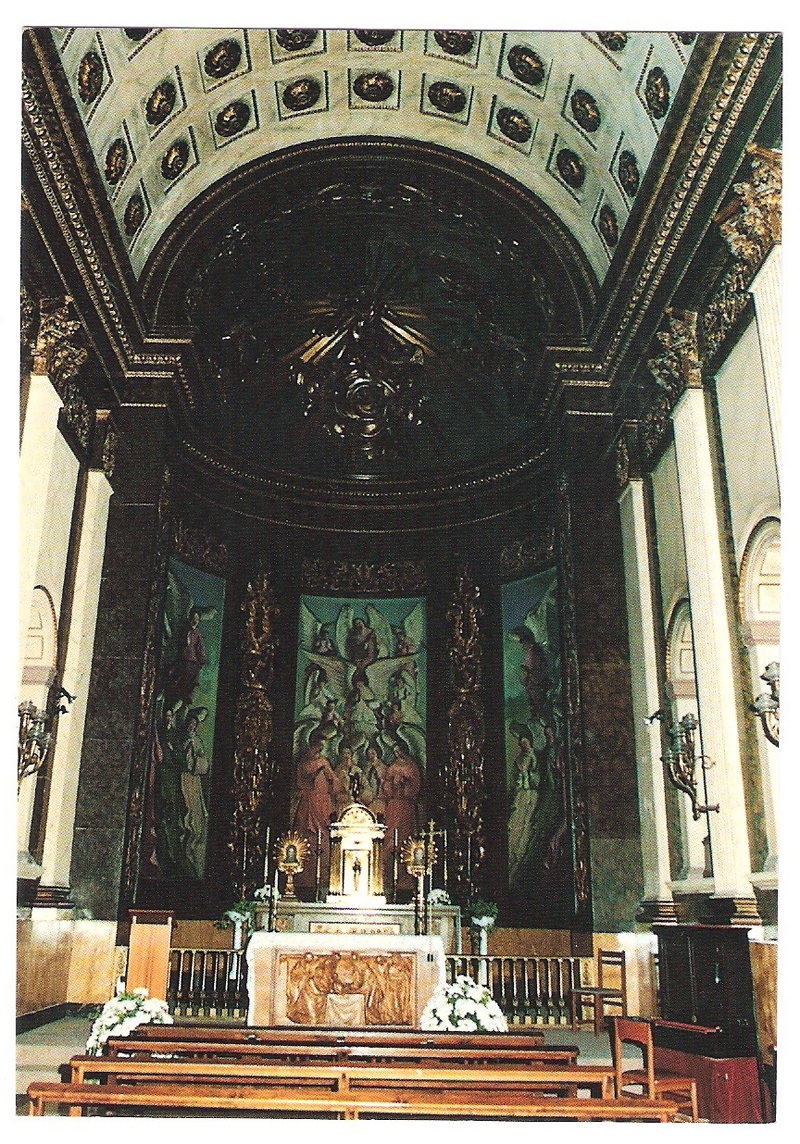
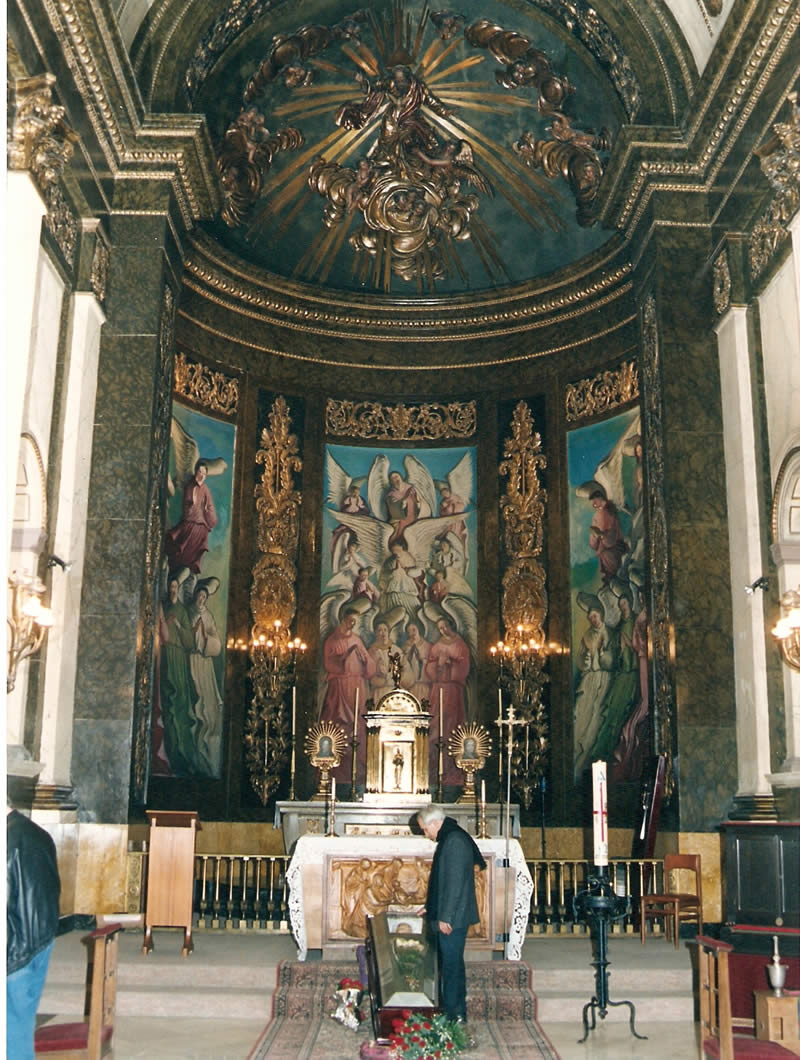
The Chapel, years ago.
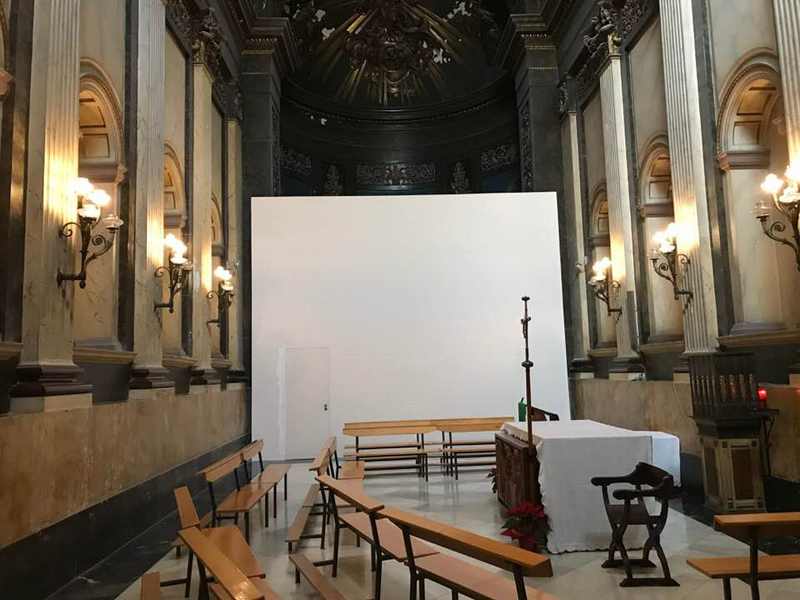
The Chapel, nowadays
More pictures and information on
this link.
And more about the new business orientation. Without mass,
tourist visits without taxes, "donating" 8 euros.
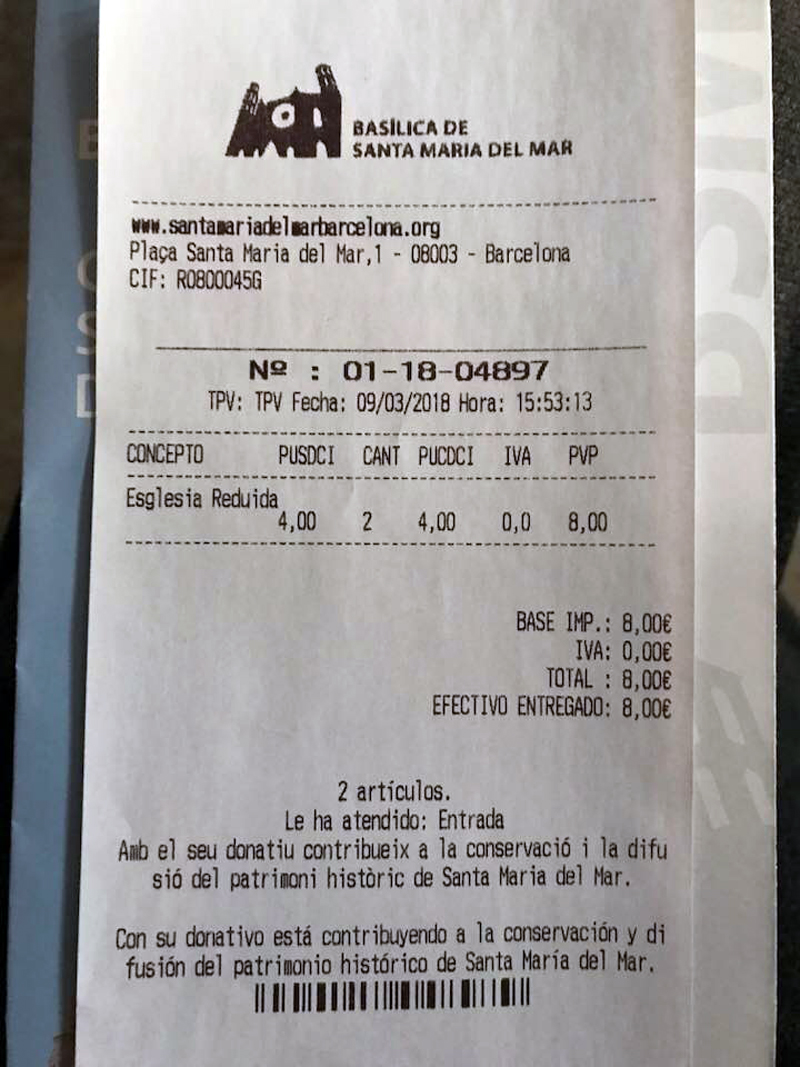
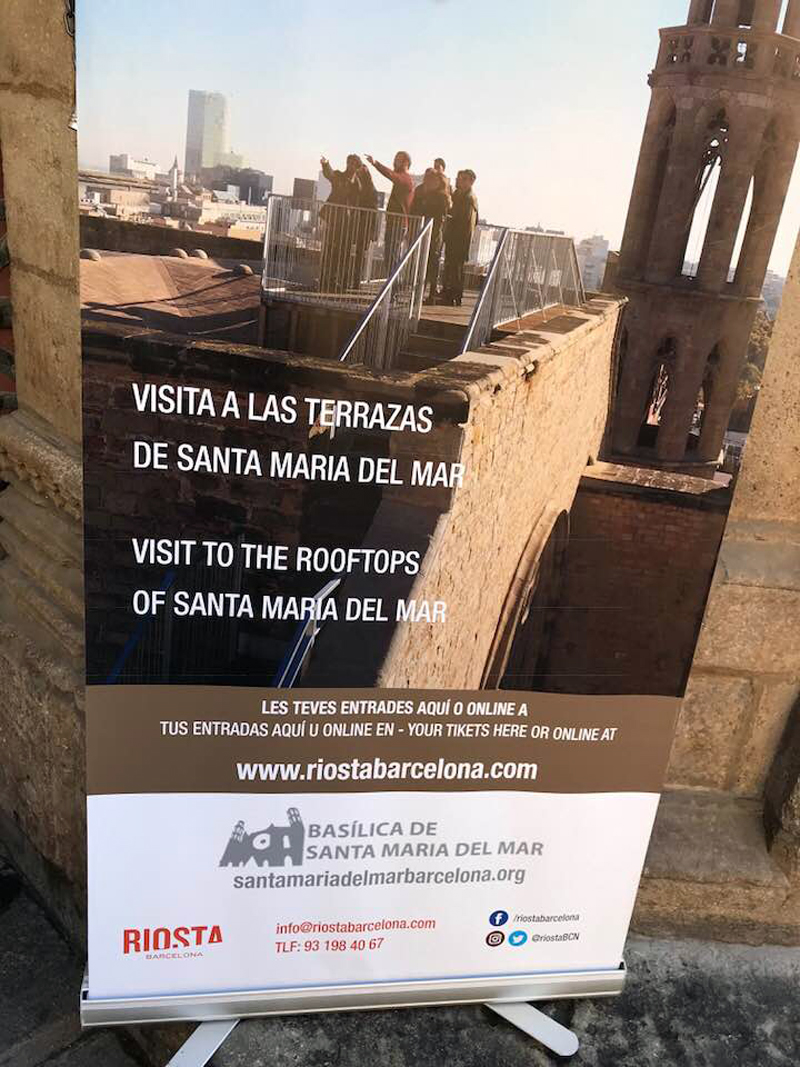
Personal comments by Dr. Francisco Tort Mitjans
in light of his forced retirement. Click
here to read
Francisco Armanya Font (1718-1803).
Ecclesiastical and theologian. Bishop of Lugo and Archbishop
of Tarragona. Short bio extracted from the article by Francesc
Tort (Diccionario de Historia Eclesiástica)
Born in La Geltrú - joined at the end of the century
to Villanueva - on June 3, l7l8, near the castle and the
parish church. He died in the archiepiscopal palace of Tarragona
on May 4, l803. His father Francisco was a sailor. His mother's
family, Rosa, farmers. Tenth of twelve brothers: four died
in childhood, four religious, including José, entered
the convent of Dominicans of Santa Catalina de Barcelona
and Mariano in the convent of Augustinian of the same city.
Two got married. Francisco, finished his primary studies
in the same Geltrú, at the age of eleven is sent
with his brother José, at the time appointed teacher
of the boarding school that the Dominicans had in Tremp
(Lleida), where he perfected in Latin and attended philosophy.
After two years, he returned to Geltrú with a bachelor's
degree.
Francisco decided to follow in the footsteps of his brother
Mariano, Augustinian, entering at the age of 14 the Augustinian
of Barcelona (1732), professed (1734) and ordained priest
(1742). Master of Novices (1743). Opposition to chairs at
the University of Cervera (1746). His recognized erudition,
especially in Theology and History, makes him be appointed
(1748) full member of the Academy of Good Arts of Barcelona.
In the same year, at the age of thirty, he is elected prior
of the convent of Igualada. Secretary of the provincial
(1750). Doctor and teacher (1751). Prior of the convent
of San Agustín de Barcelona (1752-58), in whose priory
the factory of the monumental church of San Agustín
de Barcelona concludes.
In the chapter celebrated in Epila was elected, at forty
years, provincial of the Augustinian of Aragon and Catalonia
(l5-IV-1758). Concluded his triennium he is provincial prefect
of studies, in whose period, from 1761 to 1768, works in
the composition of his work Cursus Theologicus that could
not finish when being named in 1768 bishop of Lugo. His
condition as an Augustinian was always evident, though with
equanimity.
Armanya can be defined as one of the most learned and
enlightened bishops of Spain. Austere, pious, anti-Jesuit,
philojansenist, filoregalist, monarchist, moderate Episcopalian,
jealous and prudent shepherd. Master Latin, Greek, French.
Speak and write Spanish perfectly.
In the context of the dissatisfaction manifested in Catalonia,
graduates at the University of Cervera were not promoted
to the episcopate and, above all, because of their political
and religious profile, their election takes place at the
headquarters of Lugo, including the Episcopal Dominion.
Armanyá in possession of the pontifical bulls, of
which the Council of Castile retained the "Pro Vasallos"
of the Pope, on August 28, 1768 was consecrated bishop by
José Climent i Avinent in the temple of San Agustín.
On October 25 he arrives in Lugo and on the 30th he takes
possession of the bishopric.
Armanyá fit well in Lugo, and ater he is well received
in Tarragona. In his transfer from Lugo to Tarragona he
passes and stays in Madrid, Montserrat, Barcelona, and Villanueva
and Geltrú. Having taken possession by on May 30,
arrived in Tarragona on June 25, until September 18 does
not make the solemn takeover. The pontificate of Armanyá
in Tarragona follows, on the one hand, the ecclesial and
canonical guidelines in use, and on the other the experience
of his past 17 years in Lugo, as, for example, instituting
the Liturgical Conferences in the archdiocese again, although
with a democratic nuance that the presidents and secretaries
were elected, for each of them, without episcopal intervention.
After having received King Carlos IV in the cathedral in
1802, having become seriously ill on May 2, 1803, he died
on the 4th. Felix Amat preached the funeral oration in Tarragona.
On the sixth of June the Augustinians of Barcelona celebrated
the funeral at the Church of San Agustín. On the
twenty-eighth of June a funeral service was held in Lugo
preaching the Augustinian Jose Rolán.
HOMILY IN THE FUNERAL OF
MR. JOSEP Mª FIGUERAS I BASSOLS
Mr. Josep Mª Figueras i Bassols was born in the city
of Barcelona on December 18, 1929, where he died on March
30, 1994. The older of four brothers, studied at the Virtelia
School, then graduated in Law and Political Science at University
of Barcelona, and later he went to George-Town, USA. In
1954, he married Mrs. Virginia Costa, and their children
were named Bruno, Virginia, Carlos, Roman and Verta.
Mr. Josep Figueres was one of the most prominent and influential
people in the social, economic and political life of Catalonia,
Spain and Europe. His penetrating and respectful nature
led him to glimpse the best of each person. He was a leader's
and he liked to be surrounded with the best collaborators.
The difficulties inherent in his high responsibilities,
far from inhibiting him, always were managed properly. He
was interested in all the ways and philosophies of living,
thinking and organizing. He studied History, literature,
music, the plastic arts... also he loved nature and sports.
It is not strange, as a gift, that a person of such eminent
qualities achieved, in the peculiar coordinates of time
and space, positions of maximum relevance, as, among others,
that of President of the Chamber of Commerce, Industry and
Navigation of Barcelona , an entity linked to Santa Maria
del Mar which led him to maintain the best relationship
with the church and with myself.
During the twelve years of his mandate, the Chamber achieved
important goals, among others, that the arbitration of the
“Consulat del Mar” regained the legal recognition
that had been lost for years.
Mr. Figueres also emphasized doorways, within his family,
in relations with his wife Virginia and their children.
He was a “fascinating” husband and father, as
his children asserted, someone who knew how to give himself
up in the difficult art of education.
His main educational influence on the family was preaching
with the examples of work, respect, prudence....
"The Lord is good to those who trust him, with all
those who seek him. It is good to wait silently for the
salvation of the Lord". Ee have read so in the first
reading. This quote summarizes the research spirit, the
delight of light, truth, certainty, rationality, the selective
spirit of our brother Josep Mª.
Lacking the right answers, at the various levels of intelligence
and imagination, about our origin and end, there are many
who trust God but do not understand the future life. Doubt
is an expression, a form of faith, of deep intellectual
life, and, even of logic, as all, in fact, we move, navigate
the sea of religion and thought, with insecure ships.
It is true that life is seriously inclined, but perhaps
we attach too much importance to the body, to human life,
and to society. In the end, for at least a few years of
life, and some of us always, we believe we are creators
and we do not realize that our body can be considered simply
a replica of the spirit. Living in the body, we come to
affirm both our material essence that we can not, almost,
understand how it can be seen without eyes, feel without
ears, think and remember without a brain. The best and normal
thing would be to enjoy, without the material instrument
of the body, anything that really exists outside of the
body, which also remains outside of us when our human eyes
are broken due to the old age, or due to death. From this
point of view, which does not rely on scientific methodology,
the needs of the body would be simple imperfections and
their achievement substitutes of the spirit.
If someone does not admit the existence of paths more linked
to the imagination than reason, how much our powers are
mined, located in a medium that we can not fully understand,
we can invade a certain anxiety. We had given so much importance
to the body, we had felt so decisive, we had intervened,
so swiftly awake, in the development of things, that we
would not have told ourselves that, if everything ended
in death, life would be like a game that He rules. All life,
far from responding to chance, is a providence. We come
from God and to Him we return.
All our past, or that we still kept in memory, or echoes
the historical analysis, would have died if it had not been
printed, assured, true, in God. Thoughts, the design of
the high reach, the actions, the impulses of the heart of
our beloved Mr. Josep Mª Figueras, the search for truth,
the silent wait, everything would have ended, died, finished,
if God was not the eternal guarantor. He is now with God,
being upon us, who sought in the darkness, in the dark,
the doubt, and with God he enjoys all the goods, his past
and the good of communication. From this faith, almost universal,
you, wife, children, relatives and friends can continue
to enjoy the spiritual gift of their presence and communication.
The Christian creed formulates this be with the dogma of
the Communion of the Saints.
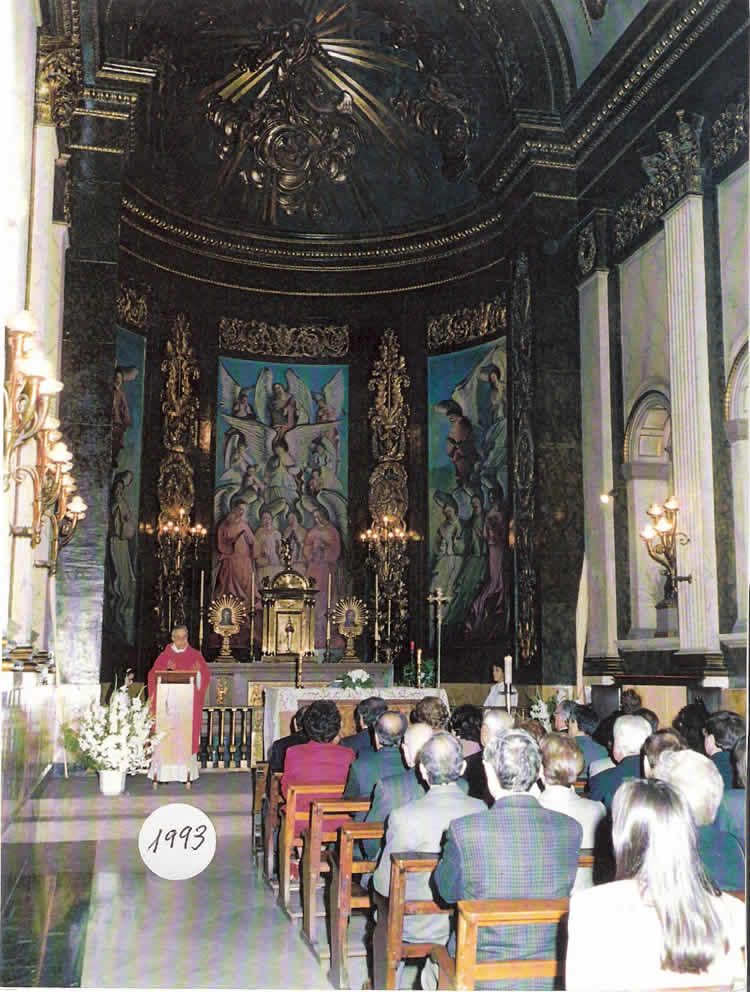
Brotherhood.
Sunday 32 during lʻany, 8-11-2020- 2011,2014,2017,2020.
Homilies preached by Mn. Tort, since he was appointed rector of Sant Pau del Camp de Barcelona in 2008, after having been rector of Santa María de Canyelles,
Saint Miquel Olèrdola, Saint Mary of the Sea of Barcelona, Saint Martin of the Clot.
Sant Pau del Camp since 2008, evening mass and Sunday at 12 noon. Always officiated by Mn. Tort himself, with special songs in the evening mass by the Soprano of the Liceo María Antonia Regueiro during the celebration. At the end, many faithful and many of the attendees stayed to listen to those songs.
On Sunday, the temple was always full with people standing because they could not sit down. Many faithful and tourists used to attend mass, to the liking of all ... before he came to destroy everything for their benefit. He had not yet been able to manipulate and make promises to any of those who, according to him, would set up infamy.
In the Solemnities, since 2008, the Chapel of Music began to act, founded by Mn. Tort at the beginning of his rectory in Santa María del Mar, continuing to this day without exception.
Thanks to Saint Paul and Saint Galdaric, co-patrons of the Brotherhood created again in Sant Pau del Camp, remembering their history.






